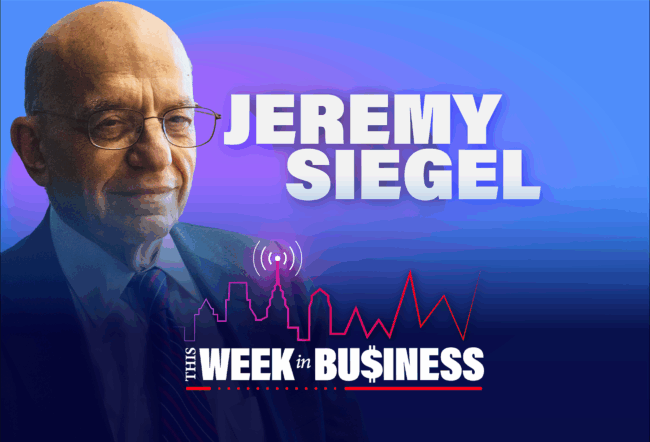The economic policies of both presidential candidates will raise the federal deficit, according to the Penn Wharton Budget Model. Wharton’s Kent Smetters explains why. This episode is part of a series on the “Business of Elections.”
Transcript
Understanding Trump’s Tax Plan
Dan Loney: As we get closer to election day, understanding the policy plans of both candidates is going to be very important. The Penn Wharton Budget Model has taken a deeper dive on both Vice President Kamala Harris's plans, as well as those of former President Donald Trump. It’s a pleasure to be joined by Kent Smetters, faculty director of the Penn Wharton Budget Model and professor of business economics and public policy.
Kent, let's start out with the collection of this information, because we're at a point right now where it feels like we're just learning a lot about what each candidate is going to bring forward.
Kent Smetters: That's right. They're very different, in some sense. Trump, we kind of know what he wants. It's very clear. It's also very expensive, because he doesn't have any way of right now paying for it. Add a lot of debt to the picture, on a path that already is exploding with federal debt. Whereas the case of Harris, the problem there is that they've released an official campaign document, then they have these kind of side conversations giving some hints about how they'll pay for some of this stuff, but it's not very organized at all. We and the Joint Committee on Taxation, CBO in particular, are pretty consistent that you have to give us details. And we're not going to give you freebies in terms of revenue and things like that. So her package is much smaller, but it does also increase the debt.
Loney: When you talk about former President Trump, there are certain things we can assume would come into play, one being the extension of the 2017 tax cuts and what kind of impact those would have.
Smetters: That's right. In particular, just extending those tax cuts— and they mainly focus on the individual side. The business side, most of those were already permanent, although some of those would have otherwise expired as well. And extending the Tax Cuts and Jobs Act, we're talking about over $4 trillion of additional debt over the over the next decade, so it's pretty expensive.
But then what he's added on to it is reducing or even eliminating taxes on Social Security benefits, as well as lowering the corporate tax rate even more, from 21% to 15%. The Tax Cuts and Jobs Act already lowered it from 35% to 21%. Now he wants to take it one step further. Altogether, that's about $5.8 trillion of additional debt over 10 years, if you allow for economic feedback effects. He does get some positive feedback effects during the first part of the decade, then he loses it toward the end of the decade. But the cost would be about $4.1 trillion. Whereas Harris is working much the opposite way.
Understanding Harris’ Tax Plan
Loney: Harris has seemed to show support for some of the ideas that President Biden has been wanting to put into play, like raising taxes on the higher-income end of the population and even the potential of raising the corporate tax rate.
Smetters: What she’s stated officially — this is in their campaign proposal — is that she would raise the corporate tax rate from 21% to 28%. That definitely raises some money. It's about $1.1 trillion over 10 years, but also has a negative effect on the economy. She has some other things that she wants to do, including the Child Tax Credit, the Earned Income Tax Credit, continuing what's called premium support for the Affordable Care Act, which is already subsidized. She would subsidize it even more. And then down payments for first-time homebuyers.
Overall, we estimate her entire package would be about $1.2 trillion on a conventional basis. But when you allow for economic feedback effects, it would raise deficits by about $2 trillion. Now, what the Harris campaign has done in light of some of these numbers is that they are having these side conversations. One reporter asked them, “Do you not stand by the Biden-Harris fiscal year 2025 budget?” And the Harris campaign has said, “Yes, we agree with that budget.” So, some reporters are saying, “Oh, therefore you should include all the tax increases in that budget,” as what we call pay-for-its-revenue raisers. But then what about all the spending in that budget that she hasn't talked about yet? Is she going to suddenly walk away from those?
We can't just take one part, based on one comment, and not the other part. Presumably, she agrees with the entire budget, but she needs to confirm that. The campaign has also said some things like they are open to extending the Tax Cuts and Jobs Act, but only for people making less than $400,000. If that were the case, that would be a big additional spend right there.
Ultimately, we have to be disciplined. And we can't just be rumor chasing. We have to say, “This is what the campaign said, this is what they've actually released, and that's what we're going to look at.” We're not going to give fake money. We're not going to give free money so that the score can look better.
Loney: There's also discussion about the potential of taxing unrealized capital gains.
Smetters: That is part of the President Biden fiscal year ‘25 budget. And we as the Penn Wharton Budget Model and the Joint Committee on Taxation are the only ones that do a full analysis of the president's budget every year. We released ours in May. Usually the JCT will come out in late fall with their analysis.
Both JCT and us agree on one thing, and that is this particular tax that the president has talked about, which he also included in the fiscal year 2024, budget, that's about the only thing we refuse to score. The reason is that there's no details about it. What has been released really is not coherent at all. They call it “billionaire tax.” It's not actually focused on billionaires. I think the reason why they want to shy away from it is they don't want to have the conversation about, “If your parent owns a business, how is that privately held business going to be evaluated every year?” You're going to need some government agency to agree on the valuation of that business. And how are they going to pay taxes on the unrealized gains on that business, where they're not liquid? Are they going to give shares of that business to the government? Then how does that regulation come about? Because unless it's SEC registered, that would be very challenging.
The Trump administration plays games with the budget. The Biden administration plays games with the budget. This is definitely one way they're doing it, in the sense that they want to take a revenue from it they say they got from Treasury, doing the estimate. We have no idea how they could have possibly come up with that number. There's no details. But at the same time, they never want to talk about it in any type of detail because it would lead to all these sorts of issues.
Will These Policy Plans Improve the Economy?
Loney: How much can you correlate the potential cutting of taxes in certain areas — let's use Social Security as the example here — and what that would mean potentially for growth? Individuals would have a little bit more money in their pocket.
Smetters: There are definitely ways that you can use a dollar of deficit to stimulate growth. And there's ways that it just doesn't stimulate growth. In fact, it does the opposite by adding more debt that reduces private investment. Let's take an easier example, say the corporate income tax. Those on the far right are going to say, “Whenever you reduce the corporate rate, it always pays for itself.” Well, that mathematically can't be true. It's not even close to be true. You definitely lose revenue, which we estimate in the case of the Trump reduction.
On the other hand, those on the left say, “The corporate rate has no impact on the economy.” That's absolutely not true either. Something in the middle is definitely more true in the terms of the corporate rate. In the case of not taxing Social Security benefits, that's going to have very little effect on the economy. Yes, it's going to leave a little bit more money in people's pocket for consumption, but that's not the main growth engine of the economy. The main growth factor is actually stimulating investment. That's the thing that gives you these compounded returns over time. Reducing the taxes on benefits is definitely not going to do that. It's mostly debt-causing, mostly crowding out private investment, very little stimulus in terms of new investment. Whereas the corporate rate tax at least has more stimulus in terms of investment.
Loney: With some of these policy plans, doesn’t Congress passing legislation become a factor?
Smetters: That's right. The scoring process or the even the economic distributional analysis or the economic growth analysis always has to be done under an “as if” condition. We can never say, “You know what? We don't think is realistic, therefore we're only going to give it 30% weight.” Why would it be unrealistic? Maybe it's because under the “as if” condition, as though it were done, Congress says “We don't want to do that, because of the ‘as if.’” So, like any accounting exercise, we have to say, “Suppose those were done. What would the impact be?” Otherwise, you get these circular arguments very, very quickly. And it also would put us in the role of playing politics.
But it is true that how a bill gets passed can sometimes materially impact things. For example, one thing is regulation. Is the federal government just using regulation to get something done? That could be scored a little bit differently — if they use regulation, or if they are passing something as what's called budget resolution, subject to the Byrd rule, versus not using that but having a true tax bill, which could be subject to a filibuster.
Loney: Looking at the data that you've collected for both candidates, what do you think are the most important takeaways from the numbers we see so far?
Smetters: Everybody wants to focus on the relative. Who's better? I think that's missing the big picture. The big picture is, we’re on this explosive debt path right now. And that is going to eventually accumulate in the form of some type of major problem. Either sharp increases in taxes in the future, sharp decreases in spending, or if those don't get done, sharp increases in inflation. We've had this experience with higher-than-normal inflation. We can get back to 2% inflation for a few years. But if Congress doesn't do anything, the only thing that can be done is to monetize the debt. You could be talking about 4% or 5% inflation going on for a couple of decades as one of our realistic outcomes.
So, that's the current law. Both candidates are doing the same thing. They're adding to that debt. They're both going to contract the economy. On top of that, here's what's they're both missing: We are in a position right now where we could actually bring down debt while growing the economy. On the Penn Wharton Budget Model website, we have three different major options. We don't call them liberal, conservative, and moderate. But essentially, that's what they are. Bundles one, two, and three. There are definitely ideas that are consistent with each kind of worldview out there that can bring down debt while actually growing the economy. But it requires making tough choices.



